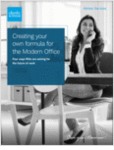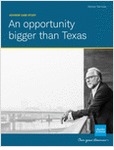In raising interest rates at a rapid clip, the Federal Reserve is expected to shift into a new, likely surprising mode: As it institutes increases this year, “it will do so irrespective of what happens in the stock market,” Jeffrey Sherman, deputy chief investment officer at DoubleLine, of which Jeffrey Gundlach is CEO, tells ThinkAdvisor in an interview on March 11.
“A lot of investors, during the last few decades, have learned and relied on that if the stock market goes down in price, the Fed will change its behavior and change its path and become more accommodative,” Sherman says.
“However, this year, a midterm election year, the Fed will focus on inflation and will do so even at the expense of some of the risk markets, like the stock market. The Fed is behind the inflation curve.”
In the interview, the chartered financial analyst, who oversees DoubleLine’s investment management subcommittee and is lead portfolio manager for multi-sector and derivative-based strategies, says in addition:
- “Outside of the Ukraine conflict, inflation is the biggest risk for the stock market.”
- “The era of easy money is over, at least for the time being. That means you want higher quality, safer assets.”
- Though the stock market is “nervous,” there are “developing opportunities.”
- Owning some value stocks is “important.”
- Sectors that look “pretty interesting” include consumer staples, health care and financials.
- Expected slower economic growth “could lead to a recessionary problem in 2023.”
Sherman, whose popular interview podcast is “The Sherman Show,” also discussed how high he believes the inflation rate will rise this year, as well as how, specifically, DoubleLine upgraded the credit quality of its portfolio in January to reduce risk.
ThinkAdvisor held a phone interview with Sherman, previously a portfolio manager and quantitative analyst at TCW, who was speaking from Los Angeles.
Last month, DoubleLine moved its corporate headquarters from Glendale, California, to Tampa, Florida. Most employees still operate out of the L.A. area.
Here are excerpts from our interview:
THINKADVISOR: Please talk about why the Federal Reserve’s actions are particularly significant now.
JEFFREY SHERMAN: It’s paramount to focus on the Fed’s policy. The market expects it to hike rates more than six times this year. I think they’re on that path.
They could surprise at next week’s meeting with a larger hike than the 25 basis points that the market is pricing in.
The Fed is going to continue to raise interest rates throughout the year and will do so irrespective of what happens in the stock market.
A lot of investors in the last few decades have learned and relied on that if the stock market goes down in price, the Fed will change its behavior and change its path and become more accommodative.
However, this year, a midterm election year, the Fed is going to focus on inflation and will even do so at the expense of some of the risk markets, like the stock market.
What’s your outlook for the stock market for the next few months?
The market is very nervous now; it was already nervous before the Russia-Ukraine war.
But there are developing opportunities. The stock market is starting to look like a place where some investors want to step back in a little.
We’ve seen a change in leadership: The market was technology- and communications-driven. But the tech-related assets — the disrupters — have come under significant pressure. And I’m not sure if they’ll bounce back in the short term.
If that’s the case, what do you see as the better bet?
You want to tilt toward value. Owning some value stocks is important. Focus on things that are in the cheapest parts of the market but are high quality.
The traditional value areas that have been cheap over the last few years have started to really hold up well. Consumer staples, health care, even the financial sector are pretty interesting.
If we get some downside [movement] in the market, you’d want to buy some of the growth names.
What should advisors be telling clients in view of rampant U.S. inflation?
Own high-quality assets. I can’t stress that enough. It’s a time of uncertainty. The inflation rate is high.
The Fed is set to go significantly faster in hiking rates than we’ve seen since the global financial crisis.
But that’s going to take a little bit of time for markets to digest.
What will be the impact on investors?
The era of easy money is over, at least for the time being. That means you want higher-quality, safer assets.
More of your fixed income portfolio should be domiciled in the U.S. and heavily invested in the U.S., not in other parts of the market.
You need to be extremely patient and not get caught up in the whipsaw nature of markets.
Be patient about fixed income?
Yes, very patient. But there’s a point where you’re going to want to start buying some of the riskier segments of the market, though right now is a little too early to be stepping back into that lower-credit-quality tier.
What sorts of investment changes has DoubleLine made this year?
At the end of January, we started to upgrade the credit quality of our portfolio. We sold some of our emerging market debt that was riskier — which would struggle in a volatile market — to buy Treasurys.
We also bought high-quality investment-grade corporate bonds because it will be more volatile out there. And there’s going to be a tightening [interest-rate] policy.
We reduced risk pretty considerably. We haven’t had any knee-jerk reactions. We’re watching credit markets and are starting to see a nibble into the market.
We’re beginning to want to buy a little more risk, but we haven’t done so yet.
You just said you bought some corporate bonds. But when you and I talked last October, you advised being cautious in that market because there was high interest-rate risk. Why did you buy in January?
Because we tried to put more interest-rate risk back into the portfolio. We wanted to buy some of the areas that were beaten up a little, and corporate credit was [one].
We only bought a couple of percent of our portfolio and the highest-quality stuff.
We’re getting out of some riskier things, like emerging markets [as noted above] and non-U.S. sovereign debt.
What are your thoughts about emerging markets, then?
They’re starting to look like a developing opportunity again. But we’re not [investing more in them] right now. We want to take a little more caution.








 March 14, 2022 at 04:06 PM
March 14, 2022 at 04:06 PM












 Copyright © 2024 ALM Global, LLC. All Rights Reserved.
Copyright © 2024 ALM Global, LLC. All Rights Reserved.